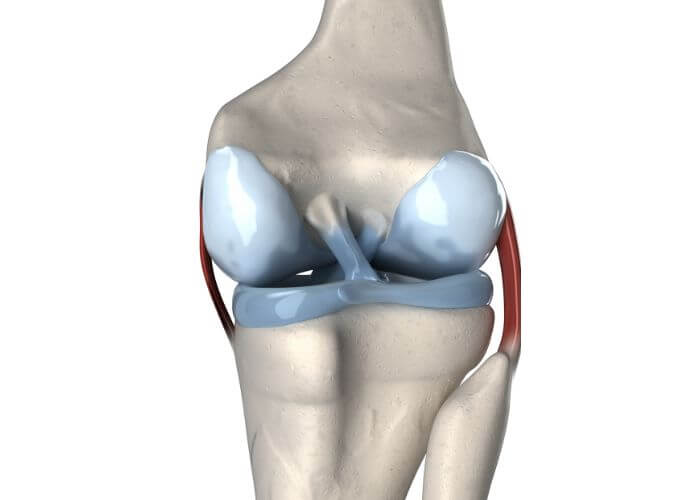What is a multi-ligament knee injury?
There are four major ligaments affiliated with the knee. The anterior cruciate ligament (ACL) and posterior cruciate ligament (PCL) form an “X” within the knee joint with the ACL located in front of the PCL. These cruciate ligaments limit forward and backward movement of the tibia (shin bone) in relation to the femur (thigh bone). The medial collateral ligament (MCL) and lateral collateral ligament (LCL) are found along the sides of the knee with the MCL located on the inner (medial) knee and the LCL on the outer (lateral) knee. These collateral ligaments prevent side-to-side movement of the knee joint and protect against unusual twisting motions. A multi-ligament injury is a rare occurrence when two or more of these ligaments are simultaneously damaged. These types of complex knee injuries are the result of major traumatic events such as a high-speed motor vehicle collision, a rough football tackle, or a fall from several feet. Dr. Answorth A. Allen, orthopedic knee specialist serving patients in Manhattan, New York City, Westchester, Long Island and surrounding areas, has the knowledge and understanding, as well as substantial experience in treating patients who have experienced a multi-ligament knee injury.

What are the symptoms of a multi-ligament knee injury?
The four ligaments within the knee work in unison to protect the knee joint while each ligament functions separately to limit various movements. Because each ligament has a similar yet separate function for knee stability, it is important to consult an orthopedic knee specialist for a proper diagnosis. Some common complaints of damage to two or more ligaments include:
- Moderate to severe pain
- Knee instability
- Swelling
- Feeling that the leg may “give way”
How is a multi-ligament knee injury diagnosed?
Due to the nature of multi-ligament knee injuries, a comprehensive medical history and physical examination by Dr. Allen are needed to determine the severity of the injury and further course of action. Diagnostic imaging is generally recommended in the cases of multi-ligament knee injuries. X-rays can be useful in identifying any bone-related injuries, such as a fracture or dislocation, as a result of this injury. Magnetic resonance imaging (MRI) can confirm which ligaments sustained damage as well as identify damage to any other soft tissue structures within the knee joint.
What is the treatment for a multi-ligament knee injury?
Non-surgical treatment:
If the ligaments involved in a multi-ligament knee injury sustained a minimal amount of damage, conservative therapy may be offered as a course of treatment. However, the knee ligaments lack their own blood supply, so conservative therapies may only provide adequate relief of symptoms. A combination of RICE (rest, ice, compression, elevation) and non-steroidal anti-inflammatory medications can be used for pain management and reduce the inflammation associated with this condition. A brace may be recommended during the healing process to help with stability. A physical therapy program may be recommended if Dr. Allen considers it safe and appropriate.
Surgical treatment:
In the event of a multi-ligament knee injury, surgical intervention is most often the recommended course of treatment. Surgical repair of these ligaments is time-sensitive to reduce scar tissue formation as well as improving functional outcomes after surgery. The multi-ligament reconstruction procedure is tailored to the patient, the specific ligaments involved, and the complexity of the injury. Multi-ligament reconstruction is performed using new ligaments harvested from either the patient (autograft) or donor (allograft) to replace the damaged portions of the original ligaments. Dr. Allen may combine various open and arthroscopic surgical techniques to make the necessary revisions for a multi-ligament knee injury.
Complex Knee Specialist

Have you experienced a recent traumatic injury resulting in knee pain? If so, you may have sustained an injury to multiple ligaments in the knee. This kind of damage is more rare than single ligament tears. Surgery is often recommended to repair the damage and restore the knee joint. Complex knee surgeon Doctor Answorth Allen is experienced in diagnosing and treating patients in Manhattan, New York City, Westchester, Long Island and surrounding areas. Contact Dr. Allen’s team today!






